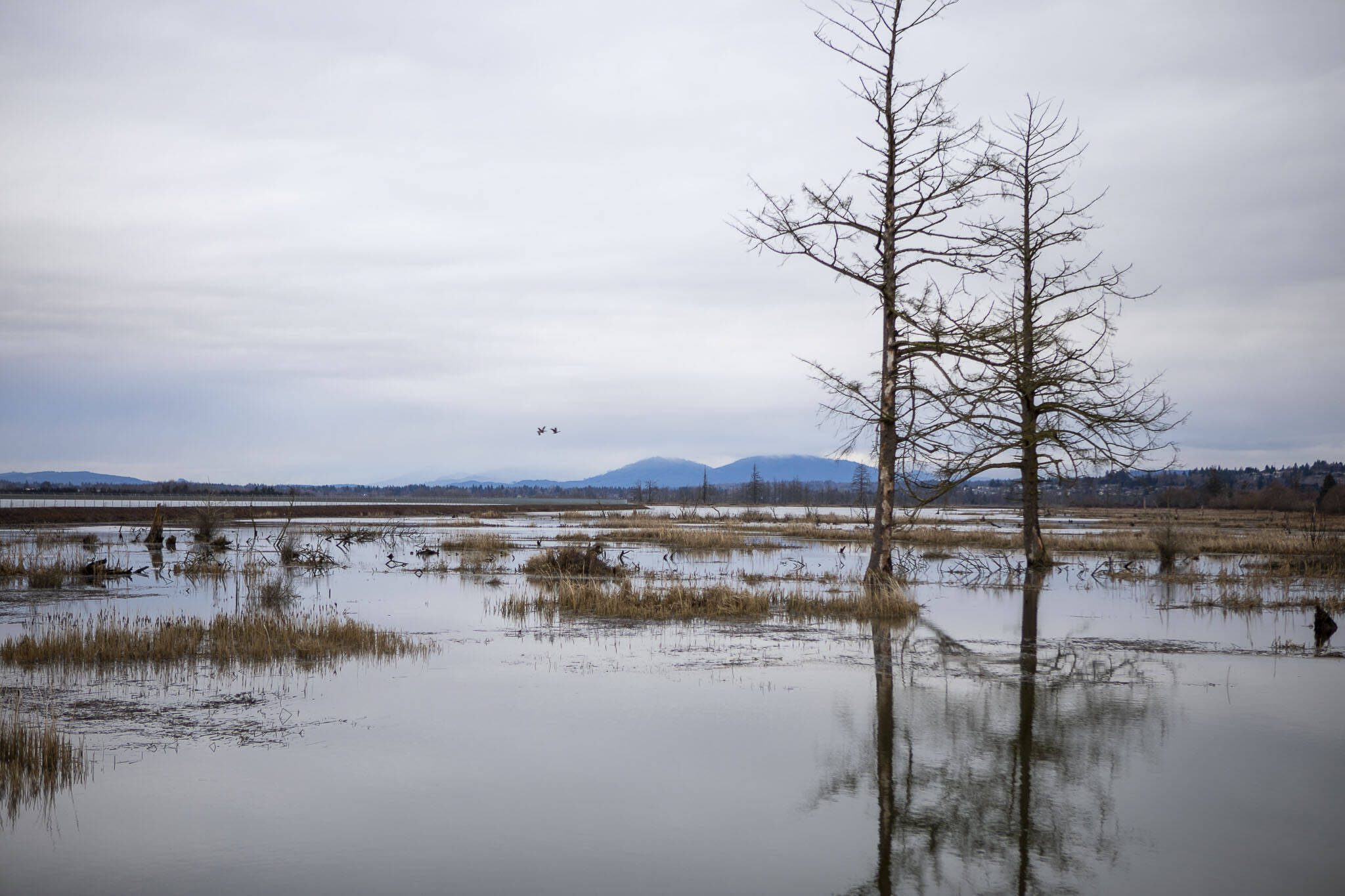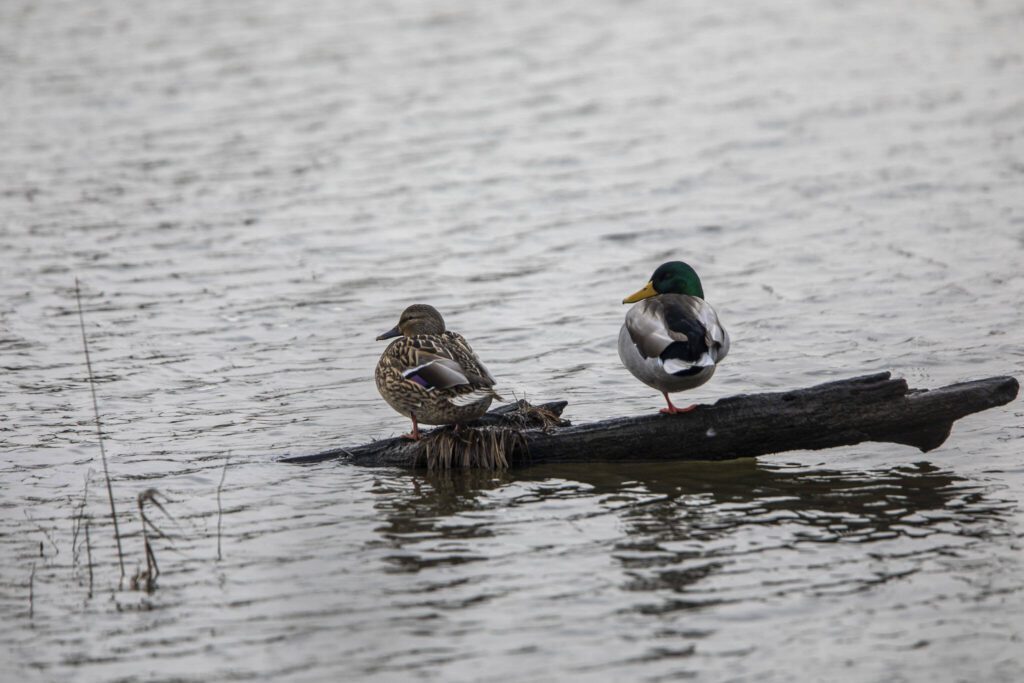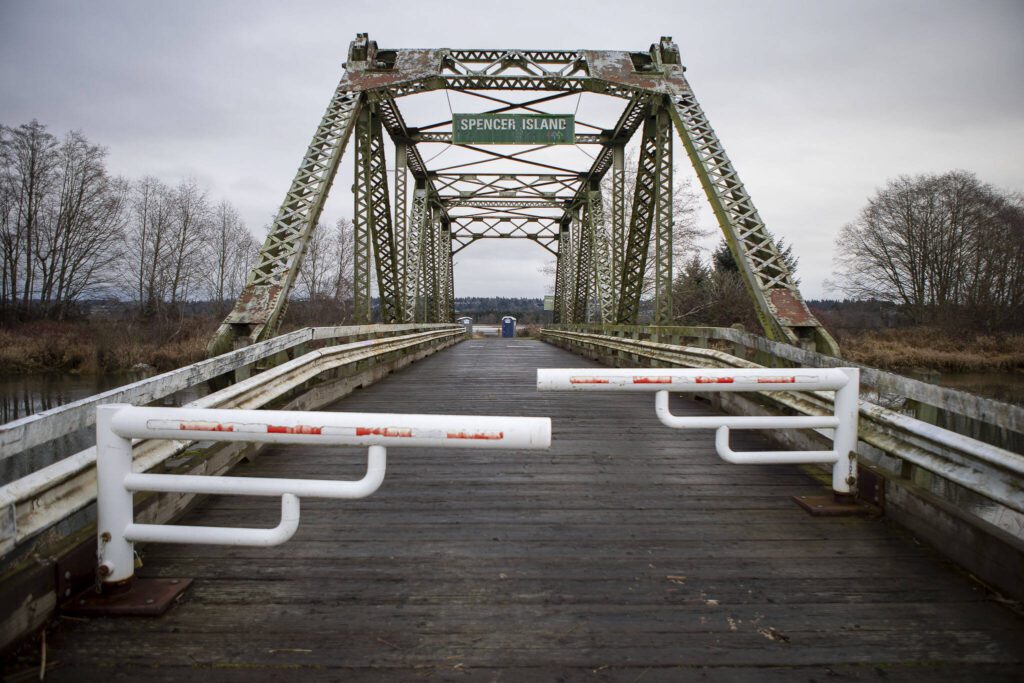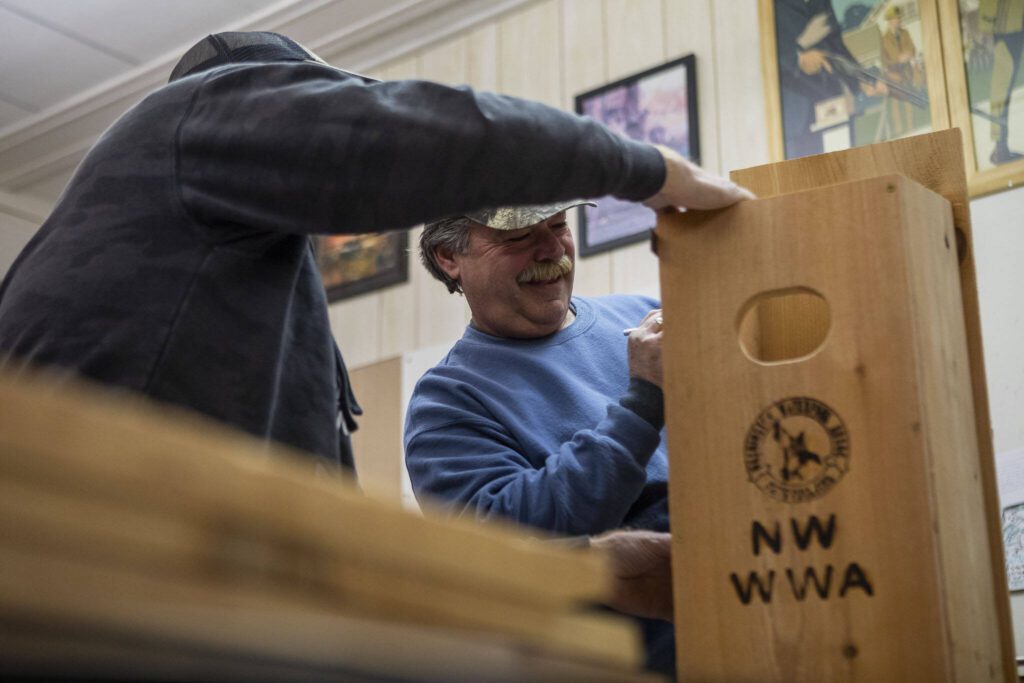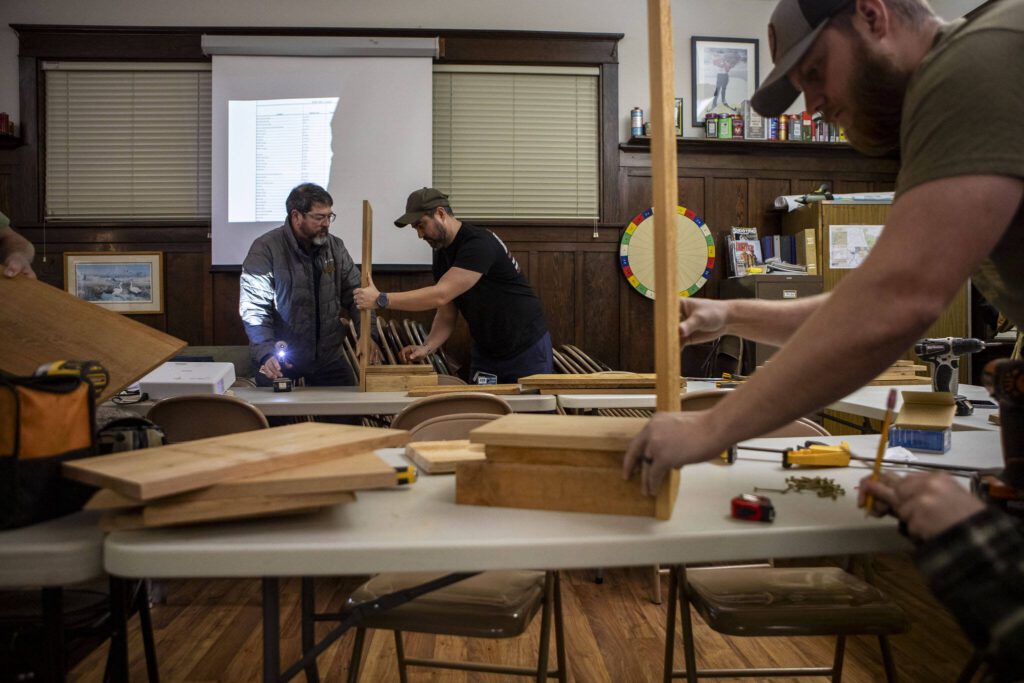EVERETT — At the heart of the Snohomish River Estuary, hundreds of birds regularly greet visitors on Spencer Island, attracting both hunters and birdwatchers.
Mallards wade in the river’s channels. Great blue herons stand poised along the shore for their next meal. Occasionally, a bald eagle flies overhead.
The avian-filled landscape is also, at times, the setting for conflict between groups who use public lands.
Local birders and hunters said most of their encounters are respectful. Both sides feel that tension occasionally arises due to limited space for both activities — and impending restoration efforts on places like Spencer Island could cause already limited recreation spaces to shrink further.
Hunting, and non-hunting, zones on public lands often “move people into consolidated areas,” said Rick Billieu, the Northwest chapter chair for the Washington Waterfowl Association.
Staff at the Snohomish County Sheriff’s Office were not aware of any history of non-hunters suffering from hunting-related injuries on county lands. Still, in the final weeks of Washington’s migratory waterfowl hunting season, hunters and birders said communication and safety are crucial when navigating shared lands.
‘A safety issue’
In 2022, birder Ann Kramer heard gunfire on the south side of Spencer Island, where hunting isn’t allowed. She was participating in the annual Christmas Bird Count, a project where volunteers count as many birds as they can in 24 hours.
A boundary about 1,400 feet north of the Spencer Island bridge divides the island essentially in half. The state Department of Fish and Wildlife owns the northern portion, so hunting is allowed there. Snohomish County owns the southern half.
“For us, it was very unpleasant to count birds and walk around with all the hunting going on,” said Kramer, a California native who isn’t accustomed to hunting in public areas.
Birders are not always familiar with hunting guidelines detailing where and when people can shoot, said Rob Wingard, assistant wildlife program manager for Fish and Wildlife.
“It still can be very loud and surprising,” he said. “That doesn’t mean it’s unsafe.”
Shotguns are short-range weapons, Wingard said, and hunters are trained to direct their shots upward.
Hunters said sometimes recreationists refuse to move out of hunting zones.
“This is a safety issue,” said Billieu, at a Washington Waterfowl Association meeting.
In addition to keeping a safe distance from hunters, both state Fish and Wildlife and the Pilchuck Audubon Society recommend birders wear bright orange to make themselves visible to hunters.
At least once a year, Billieu hears about a negative interaction, when a hunter is confronted by someone morally against hunting. But hostile situations are rare, in his experience.
‘We’re all birders’
Tom Elliott, a Washington Waterfowl Association member, said he came across several birders in a “hunting only” zone in Whatcom County. When he informed them of their error, he said they called him a murderer.
“We’re all birders,” he said about hunters and their appreciation for wildlife.
Conservationist Aldo Leopold, known as the “father” of wildlife ecology, was a hunter. Teddy Roosevelt, too, was among famous environmental advocates who also hunted.
“Perhaps no one but a hunter can understand how intense an affection a boy can feel for a piece of marsh,” Leopold once said.
Present-day hunters continue to support wildlife conservation when they purchase firearms, ammunition and other hunting equipment. The Federal Aid in Wildlife Restoration Act directs revenue from those purchases to state wildlife agencies for “wildlife conservation projects, hunter education and outdoor recreation access,” according to the U.S. Fish and Wildlife Service.
Local photographer Kathy Wade said most of her interactions with hunters have been good. Those who aren’t nice to birders, she said, “are kind of the wildcards.”
She sees hunters regularly in Stanwood, while she searches for owls through her camera lens.
“They’ll tell you where the birds are (and) what they saw,” she said.
In shared spaces, like the Samish River Unit west of Edison, she said photographers stand close together within the wildlife viewing zone, respecting the boundary of the “hunters only” zone.
“We know that hunters have a limited season to reach their quota,” she said.
For the 2023-24 season, migratory waterfowl hunting opened Oct. 14 and lasts until Jan. 28. Youth, veterans and active duty military have an additional opportunity to hunt Feb. 3.
Hunters can shoot a maximum of seven ducks, 25 coots and eight snipes this year.
‘Everybody’s land’
At a January meeting, nine members from the Northwest chapter of the waterfowl association gathered at the Twin City Sportsmen’s Club in Stanwood.
They talked about their latest hunting trips and the birds they harvested. Many were excited to share stories about bagging green-winged teal ducks — one of the most commonly harvested ducks in Washington, according to state Fish and Wildlife.
The hunters planned to build wood duck nesting boxes later in the evening. But before that, they talked about how to be approachable when walkers and birders are present.
After all, “it’s everybody’s land,” said Paul McGovern, president of the Washington Waterfowl Association.
Members said engaging in friendly discussion about their common interest — birds — helps ease tension before it can build.
“I have more pictures of birds than I do of my children,” one member joked.
McGovern said he often encounters curious hikers while hunting.
They ask him about what he does with the birds (eats them) and whether the duck decoys are real (no).
One time, a photographer asked to take a picture of the birds he had shot when he was hunting out of a boat near Spencer Island’s north side. He obliged.
In other instances, people come inside his hunting blind and talk with him, sometimes for hours when he planned to hunt.
“I look at it as a chance to educate people on hunting,” he said. “I would sacrifice some ducks for that.”
Anyone who experiences intentional obstruction of lawful hunting, or who witnesses illegal hunting, can contact police with the state Department of Fish and Wildlife at 360-902-2936.
Ta’Leah Van Sistine: 425-339-3460; taleah.vansistine@heraldnet.com; Twitter: @TaLeahRoseV.
Talk to us
> Give us your news tips.
> Send us a letter to the editor.
> More Herald contact information.
